Since this is the closest thing to a professional job I've ever had, each day feels new and exciting. I used to dream of being able to work in such an astounding environment. I come to work, check in with my supervisor, like any other job, but then I'm assigned an incredible task where I get to learn new skills, handle delicate and fascinating material, discover hidden treasures and be completely overwhelmed by knowledge.
For each of my blog posts, I'd love to take you along on this journey with me. I am quickly learning a variety of techniques and being trained on several levels of repair and binding by both Deborah Howe and Stephanie Wolff. I entered this position (U.S. Congressional Serial Set Project Specialist) having book binding knowledge and a lot of experience in making multiples. Now that I'm exposed to all the people in Preservation Services and their wide range of backgrounds and accomplishments in fine binding, conservation and digitizing, it's apparent that you never stop learning, especially not in this department.
This week, as part of the repairs I perform on the Serial Set books, I was able to do my first heat set tissue repair on one of the many large scale maps that are part of this phenomenal collection.
Let's go through the steps!
First the map was removed from the volume, but when it's folded in the book it looks like this: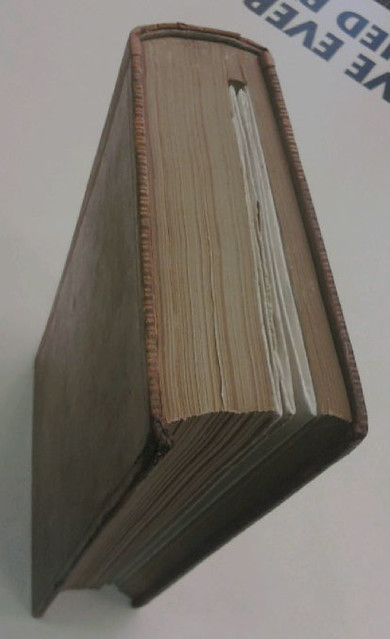
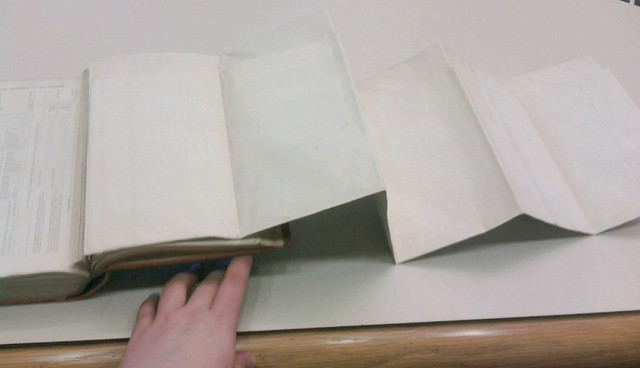
Then I laid it, face down, and applied small weights to help it relax from its folded confinement: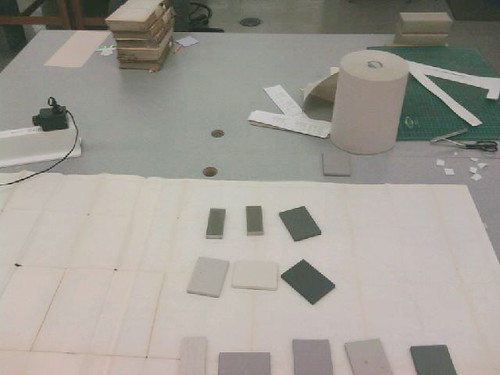
Almost all of the cross-sections where fold meets fold needed a little patch, so working my way from right to left I applied a small amount of the heat set tissue in each spot, took a tacking iron set to medium and gave each cross section a patch. As I worked I moved the weights to ease the tension on the map's already delicate paper.
Toward the far left of the map, there was a big tear right through California!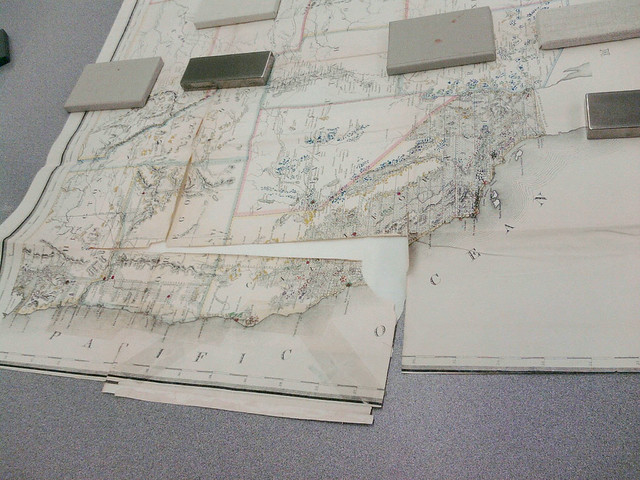
Since this is a map and we want to make sure all the lines match up, Deborah showed me this nice trick. We flipped the map over and with very tiny pieces (so tiny you can't even see them!) of the heat set tissue I made tackets to hold the map in the right places. Then we flipped the map back over and I laid out large tissue strips to cover the whole tear.
Once the heat set was able to cool we flipped it once more... good as new!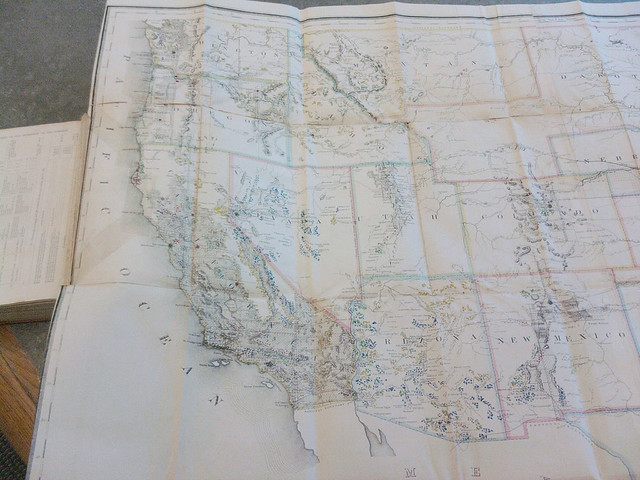
This map was then folded back up and tipped back into that particular Serial Set volume.
This map of the mineral deposits in the United States in 1866 is only one of the many incredible finds within the US Congressional Serial Set!
Written by Beth Hetland

interesting! well done!
ReplyDeletePreservation rocks! Your work is so important, and very much appreciated when I get an image on-screen with all the information I need to send it out into the world through our databases. Brian (Map Indexer, NewsBank/Readex)
ReplyDeleteThanks so much Brian and Anonymous!
ReplyDelete